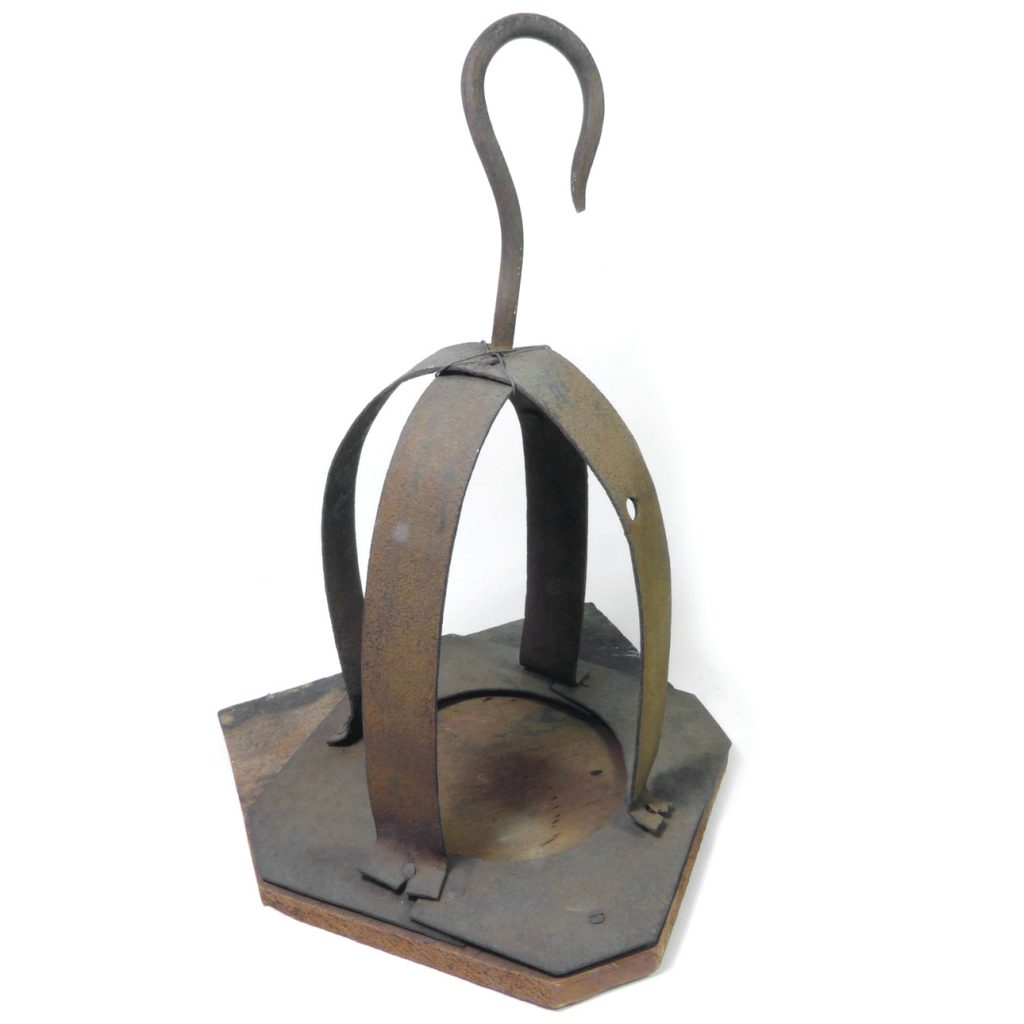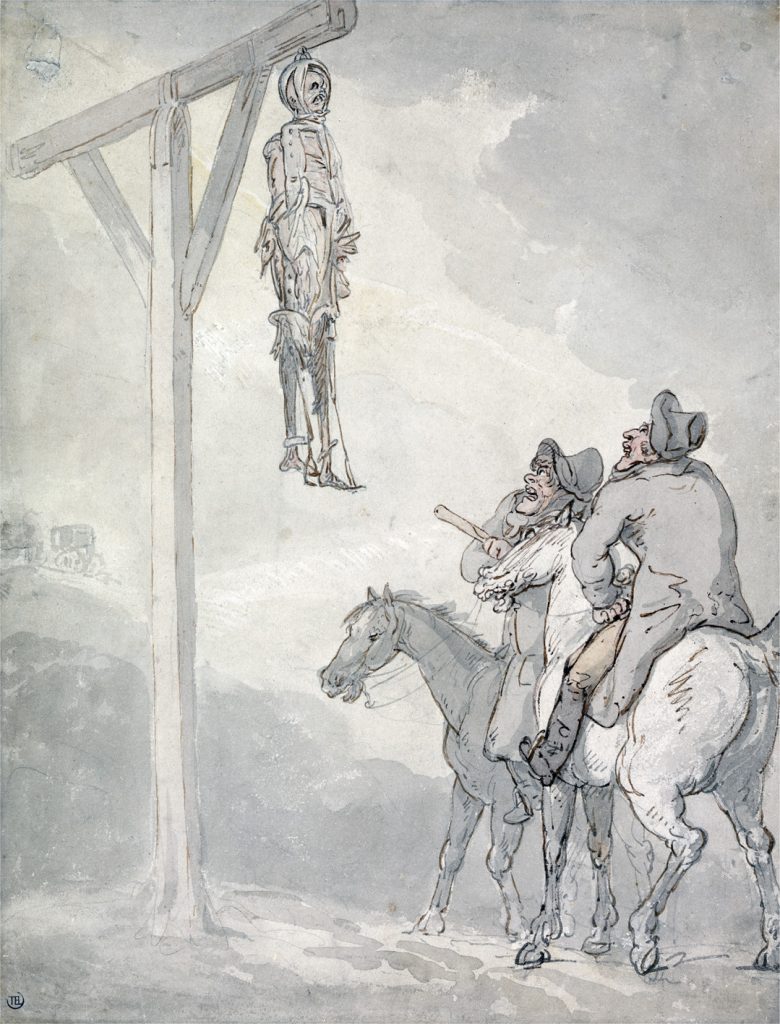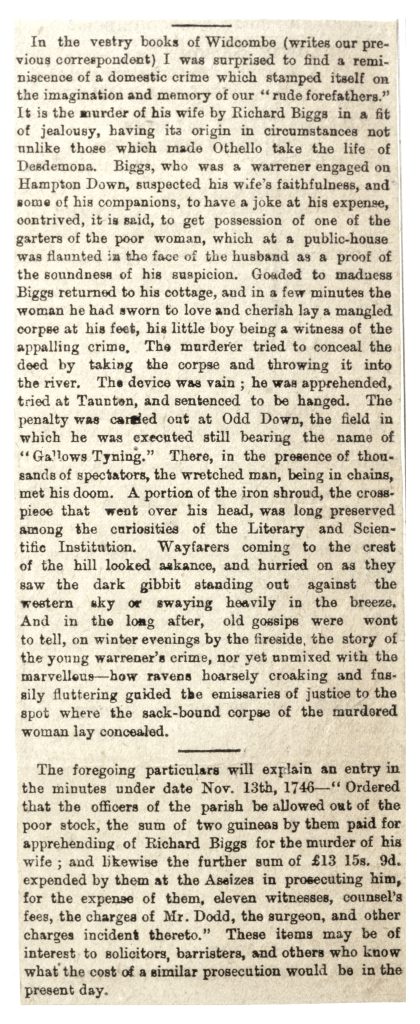Punished by the gibbet
Criminals convicted of serious crimes like murder and treason could be publicly executed on common land. After the hanging, the body was displayed in a gibbet cage, designed to to hold the body securely for a period of time, in the hope this would act as a social deterrent. Executed murderers were not entitled to a burial so they were left to rot on the site.
The last occasion this happened was in 1832, when thousands of people turned up to see the macabre spectacle of the body of convicted murderer James Cook hanging in a gibbet. However there were fears of civil disruption, and the Home Office directed the removal of the gibbet – ‘the remnant of a barbarous age’ – after just four days.
The case of Richard Biggs
Richard Biggs, convicted at Wells on his son’s testimony for killing his wife, was publicly hanged in 1748 at Gallows Tyning, Odd Down, Bath. The Institution has the gibbet cap used after the hanging in its collection.
There is an account of Biggs being measured for the gibbet irons in the General Advertiser, 20 September 1748.
‘… Last Wednesday Richard Biggs, for the murder of his wife, was executed at Odd-Down, about a mile from Bath, in sight of the house where he lived, and was afterwards hung in chains. A vast multitude of people attended his execution. During his confinement in Ilchester Gaol he behaved in a very sullen manner, regardless of death, but troubled at the thoughts of being hung in chains; for when the smith went to the Gaol to measure him, in order to make his irons, he flew in a passion and refused him. The manner of murdering his wife appears very shocking […]. After exercising this cruelty, he flung her dead body into the river near Bath.’
A quantity of human bones were discovered at Odd Down in 1929-30 according to Somerset Heritage, possibly the remains of those hanged at the scaffold.




